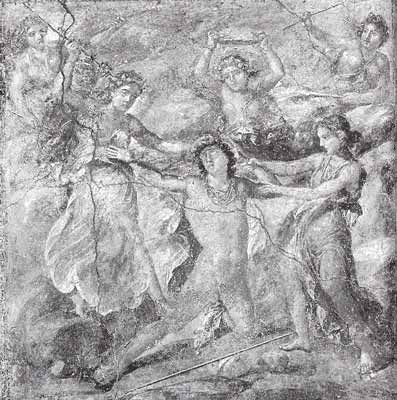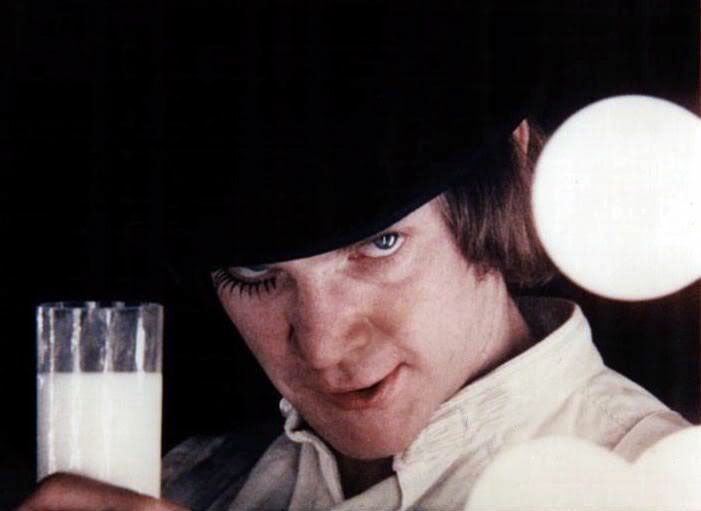It is an extreme example, but during Barry Kosky's A Lost Echo a troupe of clowns are featured in neck braces, masturbating. Don't ask me what was going through Mr. Kosky's head when he though of that, but I remember at the time that it fostered a grotesque, claustrophobic atmosphere on the stage. If this was done on film however, not only would we be able to fast forward if the scene became too much, the mediation of the screen (whether it be movie screen or television or even computer screen) distances us from the action. As an audience member at the theatre, you choose what you focus on, or give more attention. A camera however, chooses for you what you will focus on and when you will view it, mediating the action further. So, viewed through a screen, a technique that evokes claustrophobia and disgust on stage becomes a quick, perverse frame of clowns in neck braces masturbating.
But I didn't begin this blog with the intention of discussing clowns in neck braces... I was going to discuss Dupount's Piccadilly.

This was an interesting film not only due to its content (nightclub owner-performers love triangle, miscegenation, culminating in a courtroom drama) but also because of the techniques Dupount uses.
His focus on eyes and hands throughout the film evokes an uneasy intimacy in his audience; Mabel's eyes are one such point of focus during the film, as Dupount simultaneously screens and projects Mabel's emotion by means of a close up on Gilda Grey's eyes. For example, in the scene where Bessie, the head kitchen lady, speaks with Mabel in Mabel's suite, Dupount shadows Mabel's upper face with a fern in one frame and frames her face with the feather from Bessie's hat in the succeeding shot. Such shots frame Mabel's jealousy towards Shosho, as well as her 'higher' stature (physically in comparison to Bessie). Also this is the scene where Mabel learns of Shosho's night-time audition for Wilmot, and therefore her emotions are somewhat mediated as she hides her true emotions from the 'help'.
Similarly, Dupount chooses to use hands to exhibit sentiment between character, most notably between Vic and Mabel, Mabel and Wilmot, and Wilmot and Shosho. As the gestures of Mabel and Wilmot become more hesitant and strained (Wilmot not kissing Mabel's hand as she pokes it through the door, for example), Wilmot and Shosho's hands become more intimate, especially at the Limehouse pub, where Wilmot strokes Shosho's hand at the bar (although we have not yet seen mid-shots of Shosho or Wilmot at the bar, we can identify Shosho by her 'Nosferatu' fingernails).
I was also struck by how Dupount portrayed the women and using their sexuality to manipulate the men around them. It was interesting that Dupount had the 'European' (and therefore more moral???) character always clad in layers of clothing, while the 'Asian' character frolicked around semi-naked in comparison. Shosho does clothe herself in similar clothes to Mabel when she signs her contract in front of Wilmot, and when she leaves the club with him and they head to Limehouse, however I found Dupount uses this to make a point that Shosho has been 'subsumed' into Wilmot's world. Going back to Andrew’s comments on the female statue in …Poete, are these women desirable yet unattainable? For Jim, Shosho appears to be. And for Vic, Mabel is his hearts desire, yet she does not reciprocate. Has Dupount taken this desirable/unattainable dichotomy and used it against the female characters, portraying them as immoral manipulators, rather than the high moral figure of the statue?
While its not really part of our area of study (that is, Cinematic Modernism) I really wanted to share one of my latest viewing experiences. A roommate borrowed Peter Greenaway's The Cook, The Thief, His Wife and Her Lover and it was incredible. While another piece of entertainment not for the faint hearted - Tim Roth's in it and Helen Mirren is naked for a good half of the film, need i say more?? - Greenaway's direction and use of colour themed stages (the kitchen is green, the dining room red, the bathroom white and so on) creates jaw-dropping cinematic artistry.
Here's a clip:
(Oooh and the costumes are by Jean Paul Gaultier which definately contributes to the lavish nature of the film...)
I found it to have allusions to the Greek myth about Procne, Philomela and Tereus (i.e. the Nightingale myth) where Philomela, discovering Tereus' rape and torture of her sister, Procne, kills and cooks her and Tereus' son, Itys, and feeds him to Tereus. Has anyone seen this film ( The Cook...)? What do you think?



